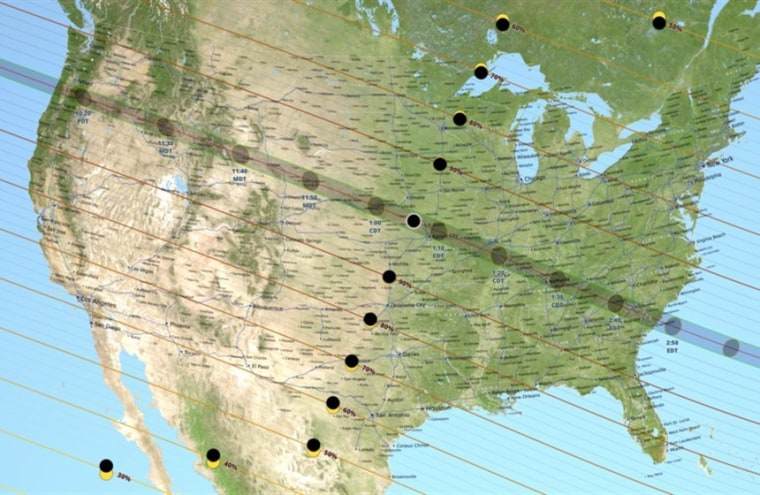On Monday, a total solar eclipse will be viewable in the United States, from coast to coast. A total solar eclipse occurs when the moon passes in between the Earth and the sun, casting a shadow that blocks the sun's light. The last total eclipse of the sun that could be seen across the United States occurred 38 years ago, on February 26, 1979.
This exciting event can be viewed first in Oregon just after 12:00 p.m. ET, reaching its first totality point at 1:15 p.m. near Salem, Oregon. The partial phases of the eclipse can last about 90 minutes, but the duration of the total eclipse of the sun can last about 2 minutes at its longest duration point. The lunar shadow will leave the United States completely just after 4:00 p.m. ET in South Carolina. Don't forget about eye safety!
If you are lucky enough to catch a glimpse of this solar masterpiece, here are the times and locations for best totality viewing.
1:15 p.m. — Salem, OR — Close to first point of eclipse totality in U.S.
1:19 p.m. — Madras, OR — Close to first point of eclipse totality in U.S.
1:42 p.m. — Casper, WY — Big 5-day eclipse festival, AstroCon
2:02 p.m. — Lincoln, NE
2:06 p.m. — St. Joseph, MO — Viewing party at airport
2:13 p.m. — Jefferson City, MO — Events all weekend including "Dark Side of the Moon" BBQ
2:20 p.m. — Carbondale, IL — Claims longest duration of totality, big festival
2:24 p.m. — Hopkinsville, KY — "Great Eclipse" Sun, Moon Earth all line up
2:27 p.m. — Nashville, TN — Largest city in totality
2:41 p.m. — Columbia, SC — Festival and baseball game
2:46 p.m. — Charleston, SC — Last point of totality in U.S.

